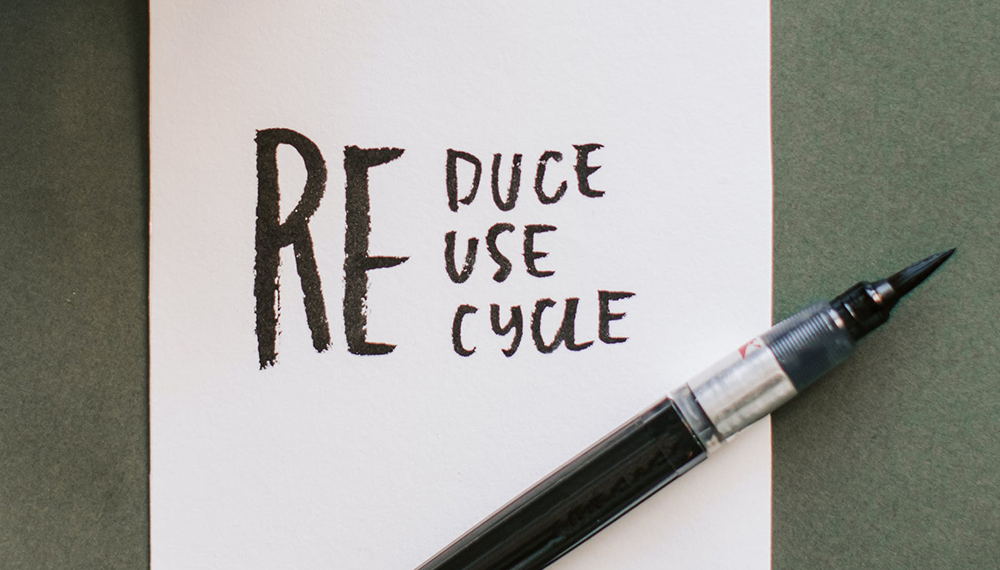Embracing Sustainability in Workplace Design Through the 3Rs
You’re likely familiar with the three Rs of sustainability: reduce, reuse, and recycle. This simple triad offers a powerful formula for sustainable practices. Consider reuse. When you give new life to an existing item, you’re contributing to the reduction of CO2 emissions, energy consumption, and fossil fuels otherwise spent on manufacturing and transportation. And when a product has served its purpose beyond repair, recycling it is the next best step to minimize landfill waste.
The 3Rs in Workplace Furnishing Decisions
When selecting furniture for your workspace, the 3Rs should be a critical part of your decision-making process. Ask yourself:
- Can any existing furniture be repurposed?
- Might there be pieces unused in another division or building that could meet your needs?
Large organizations with a dedicated Facilities team often overlook these options due to a lack of awareness about available inventory. So, take a moment to reach out to your Facilities Manager or Operations team. There might just be a treasure trove of reusable items within your own organization.
The ideal scenario is one where little to no new energy is expended. By reusing furniture, you’re conserving resources and keeping it out of the waste stream.
Advantages of Buying Used and Refurbished Furniture
If reusing isn’t viable, consider purchasing used or ‘as is’ furniture. Also, have you considered refurbished or remanufactured furniture? This is especially common with cubicles. This process uses less energy than producing new furniture and can be quite cost-effective.
Here are three compelling reasons to go the used or refurbished route:
- Cost Savings: Pre-owned furniture often costs significantly less (70-90%) than new pieces—ideal for small businesses or startups on a tight budget.
- Quick Availability: Used furniture can typically be delivered much faster (immediately or within 3-4 weeks) than new orders, which have long lead times (6-8 weeks or longer).
- Sustainability: You’re extending the useful life of furniture and conserving resources by avoiding new manufacturing.
A Sidebar Commercial Furniture Manufacturing:
A majority of commercial grade furniture is not pre-made but crafted based on individual orders. That’s right, when you place an order for that new chair, private office desk, or cubicle, it’s produced to your unique specifications. While manufacturers might stockpile some components, they largely depend on a just-in-time supply chain model, leveraging a network of suppliers spread far and wide. Consider the anatomy of a standard cubicle—it’s not just about the visible panels, storage compartments, or work surfaces. Delve a little deeper and you’ll uncover a world of materials: fabrics, cushioning materials like foam or fiberglass, cores of masonite or particleboard, and the structural integrity provided by metals such as steel or aluminum, not to mention the various plastics and rubbers. The logistics involved in gathering these materials can span states, regions, and even continents. The frames, typically steel tubes, are bent, shaped, and connected with extruded aluminum and fasteners, while the fabrics might arrive from mills across the ocean in India and China. And those electrical components snaking through the cubicle’s spine? Also likely sourced from abroad. It’s a global effort.
Compare that to a local furniture dealer who might already have the furniture inventory you need in the form of high quality pre-owned furniture that is ready to be refurbished or resold as is? The energy savings is huge! In addition to the sustainable aspect, you are also helping your local community stay employed.
Next time you’re in the market for workplace furnishings, consider pre-owned or refurbished options. It’s a sustainable choice that can also be kinder to your budget, to your time, and to the planet.
A Reality Check on Recycling
Did you know that our recycling efforts may not be as effective as we’d like to believe? While we diligently sort our recyclables, the truth about what happens next can be quite disheartening. I won’t delve deep into this topic here, but I highly recommend the enlightening investigation by NPR and The Washington Post. https://www.npr.org/2022/04/22/1094267292/planet-money-waste-land
Image credit: Pexels.com Photo by Vlada Karpovich
